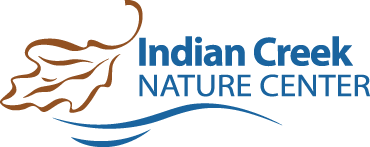 If you’re visiting the Nature Center or driving along Otis Road in the next couple of days, don’t be alarmed to see bulldozers working in Bena Field. With funding from a Green Communities grant through Rockwell Collins, we’re beginning work on a project to create a new wetland! Unlike the Lynch Wetland, this will be a “prairie pothole” – a feature which commonly dotted the landscape before settlers arrived in the 1800s. These shallow pools of water provided valuable habitat for all sorts of wildlife and hundreds of different plant species. After rains, water would collect in the prairie pothole depressions and then slowly seep into the ground or evaporate, keeping the fast-moving water from cutting channels into the valuable topsoil and carrying it downstream.
If you’re visiting the Nature Center or driving along Otis Road in the next couple of days, don’t be alarmed to see bulldozers working in Bena Field. With funding from a Green Communities grant through Rockwell Collins, we’re beginning work on a project to create a new wetland! Unlike the Lynch Wetland, this will be a “prairie pothole” – a feature which commonly dotted the landscape before settlers arrived in the 1800s. These shallow pools of water provided valuable habitat for all sorts of wildlife and hundreds of different plant species. After rains, water would collect in the prairie pothole depressions and then slowly seep into the ground or evaporate, keeping the fast-moving water from cutting channels into the valuable topsoil and carrying it downstream.
As settlers turned their land into farms, they began draining Iowa’s 1.5 million acres of wetlands. Drained and tiled fields provided larger, more reliable crop yields and better infrastructure for people to move those crops to market. But those changes were not entirely positive. Now, water moved as quickly as possible through the landscape, carrying tremendous amounts of topsoil and chemical contaminants with it. Flash floods damaged human infrastructure and erosion continues to this day to reduce the acres available for agriculture as creeks and rivers widen. Wildlife that once relied on prairie potholes began disappearing; migrating ducks and songbirds, insects and frogs lost safe haven and habitat for feeding and breeding.
A small, intermittent stream meandered across the top of what we now call the Bena Field, running from the northwest corner to the middle of the eastern side, where it joined Bena Brook. Wet soils and boggy ground made the upper portion of the field unsuitable for crops until the farmer resculpted the land to divert the water. When the Nature Center purchased Bena Farm in the 1990s, soybean fields were replanted to native prairie plants and visitors were treated to an ever-increasing abundance of wildlife. Soil, once visibly washing across fields after a rain, stayed in place.
This new project gives us the opportunity to recreate a rare upland wetland and dramatically improve both the ecological habitats and the water quality of the Nature Center. By digging a shallow basin, about one to two feet deep, approximately a half-acre in size where the field historically was wet, we can recreate the natural hydrology of the area. Surface water coming off the hills above will slow and collect, providing an upland ephemeral pool. When the water level becomes higher than the basin, it will run under the trail through a culvert and then trickle through the prairie and riparian areas into Bena Brook. This will mimic the historic, natural course of the water. Native prairie and wetland plants will serve as a filter, cleaning the water before it enters the brook.
The digging should take a couple of days and a cover crop of grasses will be planted to hold the soil in place until native wetland and prairie plants and seeds can be planted in October or November. This schedule allows the seeds undergo natural stratification during the winter months which maximizes spring germination.
The restored wetland will also provide us a new educational feature to share with the thousands of children who come each year for guided programs or to visit with their families. Whether you catch a glimpse of a green heron standing in the shallows or hear toads calling in the evening air, you will leave with a deeper appreciation of how valuable wetlands are.
